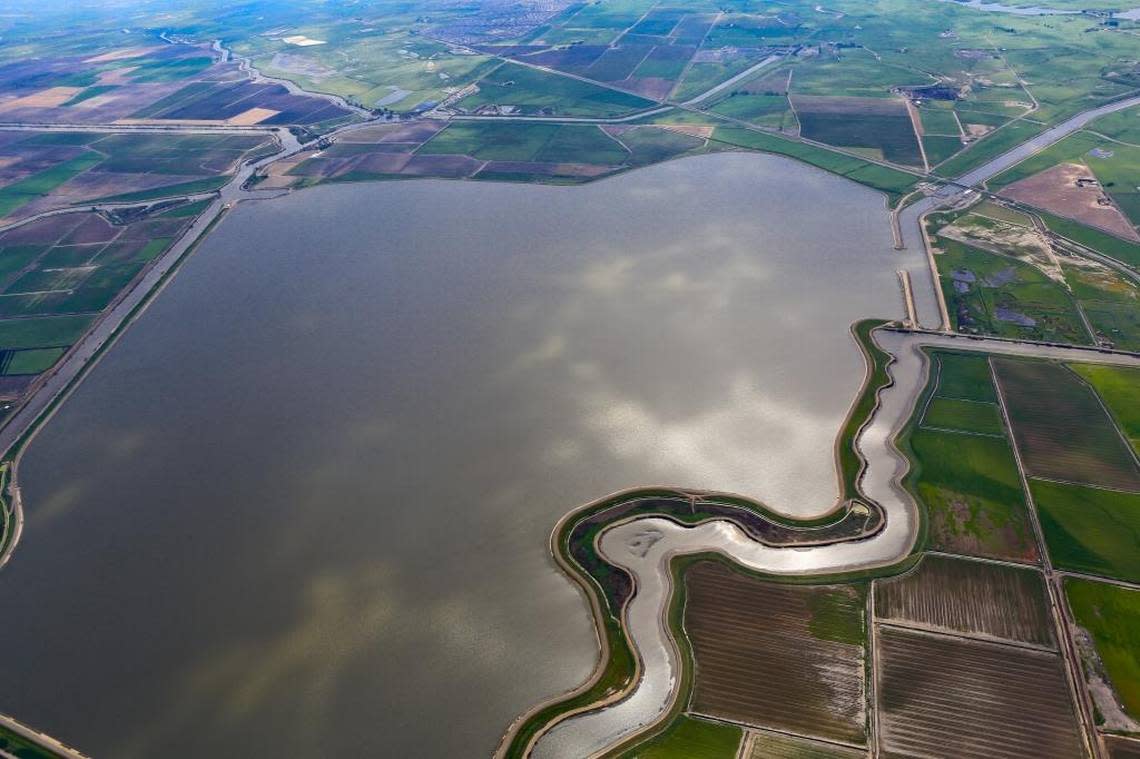California water agencies broke own rules, possibly killing thousands of endangered fish

Reality Check is a Sacramento Bee series holding officials and organizations accountable and shining a light on their decisions. Have a tip? Email realitycheck@sacbee.com.
Pumping plants in the Sacramento-San Joaquin River Delta severely harmed or killed almost double the legal amount of Chinook salmon and Steelhead trout in recent months, dealing yet another blow to the struggling endangered species.
An estimated 3,030 winter-run Chinook and 2,919 Steelhead were caught by water pumps that capture supplies for farms and cities from the delta between December and March, according to state and federal water agencies.
That’s well beyond the agencies’ own ceilings for permissible fish harm under the Endangered Species Act — referred to as “take.” Those numbers are 1,776 Chinook and 1,571 for Steelhead annually, per the National Oceanic and Atmospheric Administration.
In response to the spike, a coalition of environmental groups called on agencies to slow the rate of water pumping from the delta. Both state and federal water projects pull water out of the beleaguered estuary and ship it south, primarily to reservoirs for farms in the San Joaquin Valley.
“I continue to be shocked by the lawlessness and neglect of federal and state management agencies with regard to species that are on the brink of extinction,” said Jon Rosenfield, science director at San Francisco Baykeeeper. “You expect regulators to regulate and follow their own regulations.”
Lenny Grimaldo, environmental director of the State Water Project, said the project responded to reports of a spike in Steelhead harm by reducing pumping earlier this March, and then increased it ahead of the jump in Chinook numbers.
He said that most fish captured by the pumps are still alive and subsequently transported back to the delta. The definition of “take” includes harassment, harm, wounding as well as killing of fish.
“DWR is continuing to comply with endangered species regulations,” Grimaldo said in an emailed statement, adding that the agency is “closely monitoring the collection system at the fish screens in front of the State Water Project pumps in the south Delta.”
Virtually all species of native fish are currently struggling, with winter-run Chinook salmon faring the poorest. Spring-run Chinook saw record low spawning rates last year. And fall-run Chinook, which drive California’s commercial salmon fishing industry, are no different.
Fewer than 80,000 Central Valley fall-run Chinook salmon returned to spawn in 2022, according to the California Department of Fish and Wildlife. That marked a nearly 40% decline from the previous year, and the lowest since 2009.
Populations have declined so severely in recent years that fishery authorities may adopt severe restrictions this season or impose a ban on fishing altogether for the second consecutive year, according to the Los Angeles Times.
State and federal management of water infrastructure, including the pumps, dams and weirs that transport water across California, have a significant impact on fish populations. Predatory species and management of fish hatcheries also play a role.
In the south delta, endangered fish are pulled off traditional migratory paths between high-elevation waters and the San Francisco Bay by the powerful state and federal pumps, which change the direction of the rivers’ current.
Once pulled into a canal by the pumps, studies have shown that they often fall pray to predator species. Thousands of others are collected by fish screens on the state and federal water projects, where they are counted and processed at a salvage facility.
Rosenfield said the number of fish “take” is a fraction of the actual death count from water exports, and argued that the current export restrictions and operational requirements in the delta are too weak to protect these economically and culturally significant fish.
Limitations on permissible fish death and harm from delta water exports are connected to operating rules issued in 2019 by the Trump administration. Federal agencies are currently writing a new plan, and using a temporary agreement in the interim.
In January, the Newsom administration issued a salmon strategy with plans for protecting flows and water quality in key rivers. It called for a variety of policies to support the iconic fish, including tearing down dams and improving passages for migrating salmon.
This year has been a relatively good one for California water, with DWR estimating that snowpack levels in the Sierra Nevada — which historically has made up two-thirds of the state’s total water supply — at 110% of normal as of this week.
“We’re not in any critical water supply year,” Rosenfield said, “so there’s really no excuse for not taking a break from water exports to let these few remaining fish from last year’s spawning class survive and get to the ocean.”
In response to questions from The Sacramento Bee, Department of Water Resources director Karla Nemeth said in a statement that “now is the the time to capture and store this water while it’s available” to stave off possible future drought conditions with the likely arrival of drier La Niña conditions.
She argued that wet periods like these highlight the need for the Delta Conveyance Project, a controversial tunnel project promoted by Gov. Gavin Newsom that would channel water supplies underneath the delta to cities and farms.
“This project would construct new infrastructure that will allow us to move more water during high flow events to store for use during future droughts” she said, “ and do so in a way that minimizes impacts to fish species like steelhead trout.”

